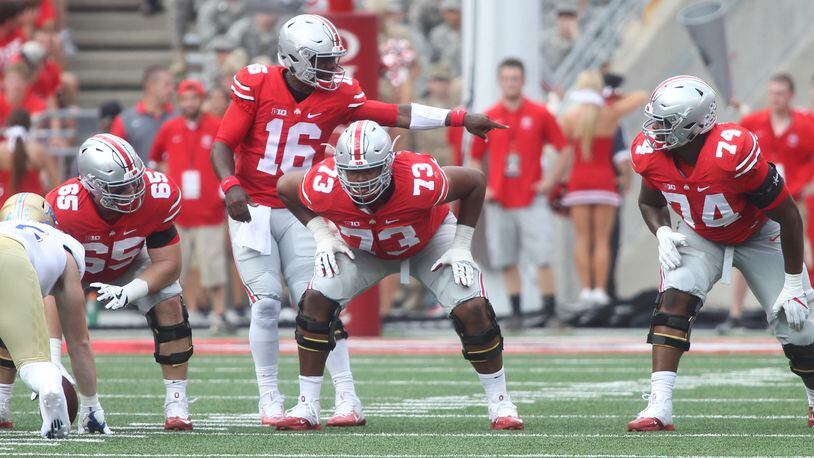He then called a quarterback’s ability to run a get-out-of-jail free card.
Boom. Eureka. There it is!
I’m sure this is not the first time anyone has made that analogy to one of Monopoly’s vital features, but it is really apt and easy to forget.
RELATED: Ohio State turns attention to season opener
Even before Meyer came back to Columbus, we spent a lot of time on the Ohio State beat (and in football in general) talking about the running quarterback.
How many runs are too much? Is it detrimental to the player’s health? Etc.
The tendency to fall back on it too quickly has been a big problem throughout Meyer’s tenure, whether that is because of too many designed QB runs or (more often, I think) the defense intentionally taking away the give on the option and forcing the quarterback to keep it.
The latter is more of a problem with J.T. Barrett than it was with Braxton Miller because Miller can make a man or two miss and still create an explosive play. That is less likely with Barrett, though he is a tough runner who will usually get a few extra yards whenever possible.
RELATED: Coaching won't hold back Ohio State offense this season | Buckeyes could benefit big time from more versatile backfield
Of course, even before the spread option became ubiquitous, the running quarterback created a conundrum for offenses and defenses alike. It changes the math for defensive coordinators, but the ability to run can also stunt a quarterback’s growth much like a pitcher with a great fastball might be slower to develop a curve or a great slasher in basketball won’t have a great jumper early in his career.
In between Miller and the return of Barrett from a 2014 broken ankle (more on thi slater), there was that fascinating three games in which Cardale Jones was the quarterback for the Buckeyes and they merely won a national championship.
Admittedly, Jones was not the primary factor Ohio State won it all. That magical run took an amazing convergence of events, not the least of which was the defense significantly elevating its play, but the other skill players flourishing around Jones as he was more of a facilitator was not coincidental.
When running the quarterback was by necessity only a change of pace (though still an effective one), Meyer and offensive coordinator Tom Herman drew up a more versatile attack that shredded two good defenses and Oregon.
RELATED: What will J.T. Barrett’s legacy be?
The following season, Ohio State spent most of the year vacillating between a less-imaginative version of what had worked in the playoff and simply plugging in Barrett to let his legs relieve the pressure who figured out Ed Warinner’s one or two tricks.
Wins over Penn State and Rutgers proved to be fool’s gold as everything ground to a halt against Michigan State — a game in which the Spartans happily took advantage of the fact Ohio State wasn’t confident in doing anything but playing that get-out-of-jail free card.
All MSU had to do was force Barrett into keeping the ball instead of handing it to the more-dangerous Ezekiel Elliott, and the Buckeyes were toast.
Ezekiel Elliott’s father shares details of how Cowboys RB will appeal NFL suspension https://t.co/ve6omf6QjD pic.twitter.com/Ek4x0pIR8R
— Dayton Daily News (@daytondailynews) August 14, 2017
Although spread option coaches — including Meyer and Herman — downplay the injury risk, that’s real, too. However dangerous the pocket can be, the fact remains Meyer’s quarterbacks have frequently been banged up even when they are not forced out of games (which happened to both Miller and Barrett). At times a hobbled quarterback limits playcalling, too.
So the question heading into 2017 is this: Will Meyer remember the downside to over-running the QB? Will new offensive coordinator Kevin Wilson be a difference in how Ohio State’s offense responds to adversity? Or will it continue to fall back on old habits?
Like I said with Wilson acknowledging they need to concentrate on putting guys into better position to succeed, knowing is half the battle.
It’s probably safe to be optimistic a more versatile attack is coming.
At least for now.
About the Author
